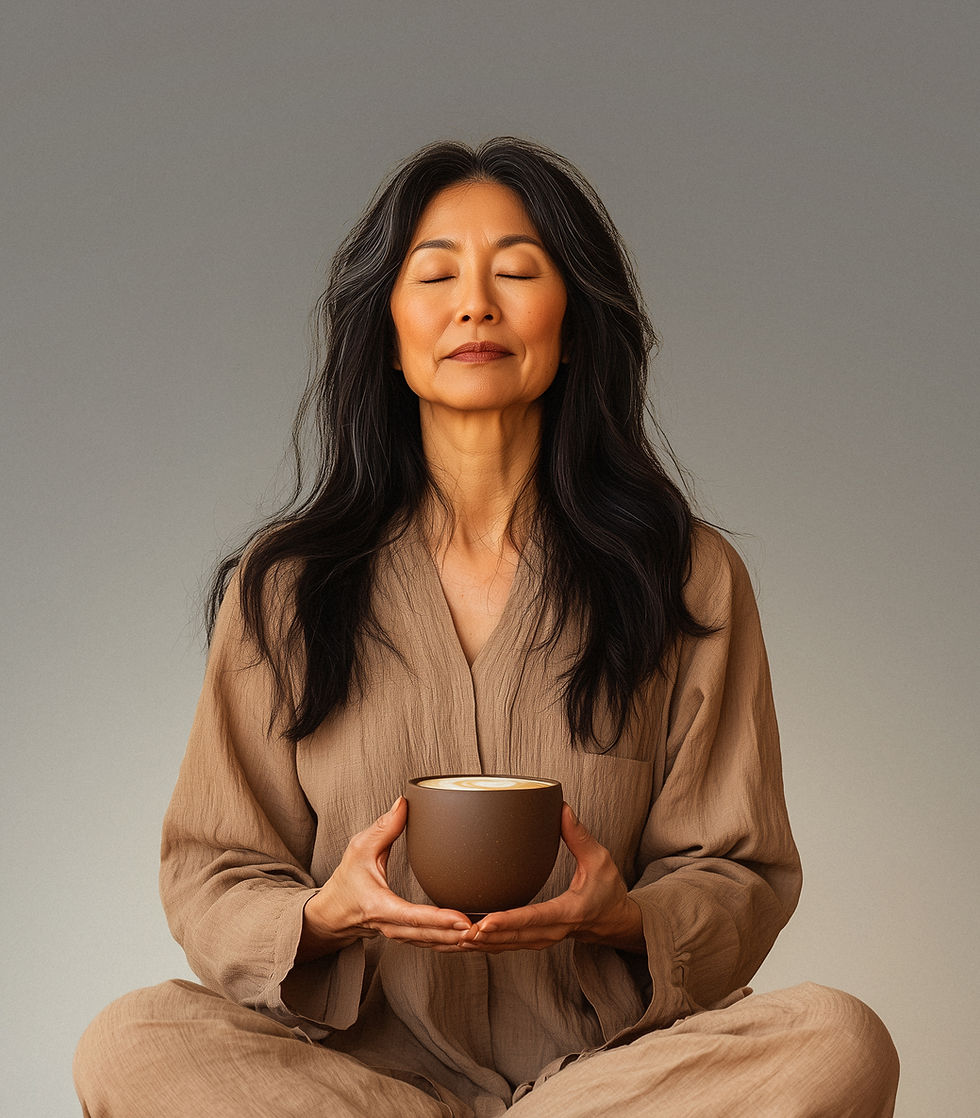Effective Grounding Tools for Your Worst CPTSD Symptoms
- Anna Belle Wood
- 3 days ago
- 3 min read

Grounding refers to coping with difficult thoughts, feelings, and body sensations by returning to the present moment, on purpose. Anyone can use grounding to cope with their worst symptoms. Let's break it down, to give you a sense of what it is and if it could work for you.
Notice and name.
The first step is to notice and name what is going on. For example, This is a trauma response. This is a flashback. My body is remembering. By labeling these experiences, you begin to disrupt and challenge the fear and shame of CPTSD, which, if left unchecked, can remain destabilizing.
Practice what works.
Find something you can focus on even harder than the emotional distress. It must cut through the noise of the stress response in order to reorient you to the present moment. Here are some examples. You will likely find that you have naturally gravitated toward some of these things.
Temperature shift: Hold ice, splash cold water, or use a cold compress on the back of your neck to stimulate the vagus nerve. Alternatively, hold a warm object (like a warm mug), take a hot shower or bath, or use a heating pad to stimulate the nervous system.
Weighted object: Use a heavy comforter, weighted blanket, stuffed animal, or lap pet to help your body locate itself in space. Ask for a hug or hand to hold from a trusted person.
Intentional movement: Give yourself a hug, place a hand on your heart, or assume child's pose or another restorative yoga position. Allow yourself to be held by the earth.
Compassionate self talk: Talk to yourself like you would a small child. For example, These are just thoughts and feelings. It feels scary bu they can't hurt you. You're safe and sound. You're not alone. I'll stay here with you. Let's see what we can do do to make this a little easier.
Gratitude list: Name (to yourself, on paper, on your phone) what's not wrong, even now. For example, There is a roof over my head. There is food and water in the kitchen. There is medical care, if needed. There are my people. There is my ability to think, to focus, to breath, even now.
Mental grounding: Count as high as you can, focusing on one number at a time. 1, 2, 3, 4, 5... How high can you go? Count (or subtract) by 2's, 5's, or 10's. When you lose track, start over.
Physical grounding: Focus on an object of interest. Anything around you that you choose. Notice everything you can about it. Touch it. Hold it. Feel it. Is is hard or soft? Color? Texture? Smell? Weight? Warm or cold? Soft or hard? Does it have designs? Patterns? Count them.
Anything can be turned into a grounding exercise. As long as it brings us out of our heads, when we are stuck in trauma mind, and into the present moment, where we can begin to establish safety. Breath by breath. One day at a time. Rather than staying in old patterned responses.

Case study
Carla was driving home from an outing that left her in her head, feeling emotionally and physically sick. She could feel herself start to spiral. She decided to try to steady herself with mental grounding. While still watching the road, she began counting, giving the steering wheel rhythmic squeezes as she went. She noticed things felt a little easier and she made it home safely.
I hope you can see how grounding can make dealing with the worst symptoms of CPTSD more manageable. Any place. Any time. Wherever you are, I am wishing you well on the journey. I know it's hard but, remember, lasting change doesn't happen overnight. Stick with it. You're worth it.



Comments